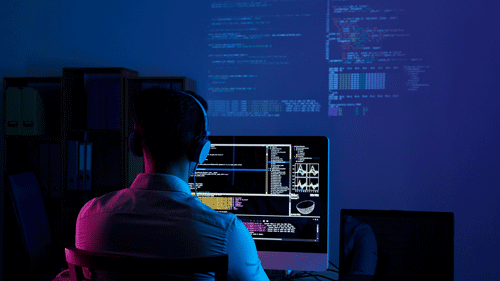Boosted by GenAI in the world of technology, code development has been vastly improved with efficiency without necessarily compromising originality. Nevertheless, behind all the wonders of automated coding stands a silent but important concern - the oversight of weak links within GenAI-created code. The Promise of GenAI-Generated Code GenAI's learning tool, which can imitate...
These vulnerabilities that can be present in containers are the ones that only a reliable container security firm will be able to catch.
When it comes to cybersecurity, there are a lot of different factors to consider. But one of the most important is ensuring that your containers are secure. After all, if your containers are breached, it could lead to serious consequences for your business. That's why working with a reliable container security firm is so important. They will be able to identify vulnerabilities you may not be able to catch on your own. And they can help you mitigate the risks associated with those vulnerabilities. There are a lot of different container security firms out there. But not all of them are created equal. You'll want to make sure that you choose a firm that has a proven track record of success. And you'll also want to make sure that they have a robust security platform that can be tailored to your specific needs. That's because there are vulnerabilities that only a firm with a comprehensive security platform can catch.
Here are some of those:
1. Insecure Communication
One of the most common vulnerabilities that container security firms catch is insecure communication. This usually occurs when containers communicate with each other over an unencrypted channel. That means that if one of the containers is breached, all others could also be.
The thing is, many businesses don't even realize that this is a problem. They assume that since the containers communicate internally, there's no need to worry about encryption. But that's not the case. To ensure that your containers are secure, you must ensure that all communication is encrypted.
2. Insufficient Authentication
Another common vulnerability is insufficient authentication. This usually occurs when containers use weak or easily guessed passwords. If a hacker can guess the password, they could gain access to the data inside the container, which you don't want.
3. Inadequate Authorization
A third vulnerability that can be present is an inadequate authorization. This usually occurs when containers don't have the proper permissions set. Having access to just one of the containers implies that a hacker could potentially have access to all of them.
The good thing is that trusted container security firms can mitigate these vulnerabilities. But working with a container security firm with experience and expertise is essential. Only then can you be sure that your containers are genuinely secure.
4. Lack of Auditing
A fourth vulnerability that can be present is a lack of auditing. This usually occurs when containers don't keep track of who has accessed them and when. Container security firms that are reputable will have auditing capabilities to help you track down the unauthorized access. This way, you can quickly mitigate any risks associated with it.
5. Lack of Security Updates
A fifth vulnerability that can be present is a lack of security updates. This usually occurs when containers don't receive the latest security patches promptly. That means that your containers could be at risk if there's a new security threat. Though this may seem like a lot to worry about, the good news is that A reliable container security company can easily catch these vulnerabilities. But working with a container security firm with experience and expertise is important. You may only be confident that your containers are safe if you can work with a team of experts.
6. Unpatched Software
A fifth vulnerability that can be present is unpatched software. This usually occurs when containers are using old or vulnerable versions of software. If a hacker can exploit one of these vulnerabilities, that could hurt your business. That's why ensuring that your containers always use the latest software versions is vital. And you can do that by working with a container security firm. They can help you patch any vulnerabilities, keep your containers up-to-date, and avoid potential risks.
7. Malicious Code Injection
A sixth vulnerability that can be present is malicious code injection. This usually occurs when containers are injected with malicious code. Perpetrators could use this code to gain access to data or even take control of the container. Don't take chances when it comes to the security of your containers. Work with a reliable container security firm with a proven track record of success to help you mitigate the risks associated with vulnerabilities. It could be the difference between a minor setback and a major disaster.


